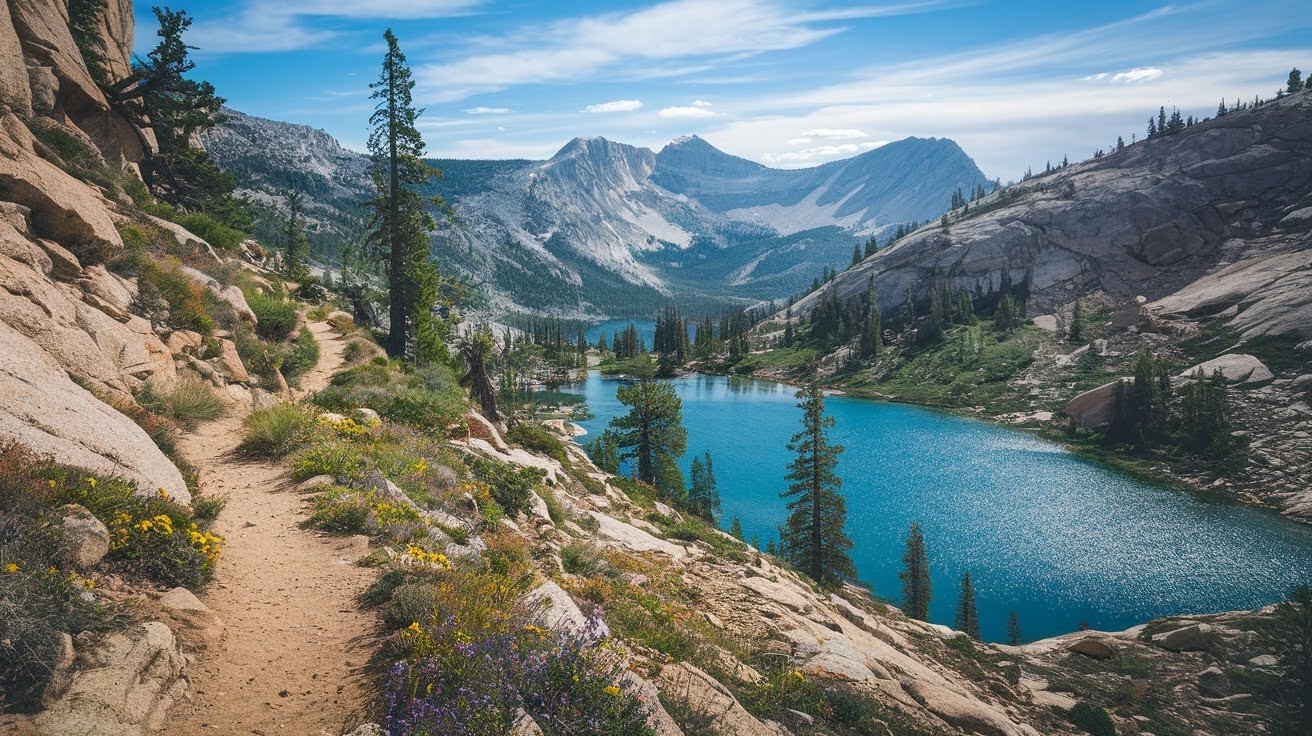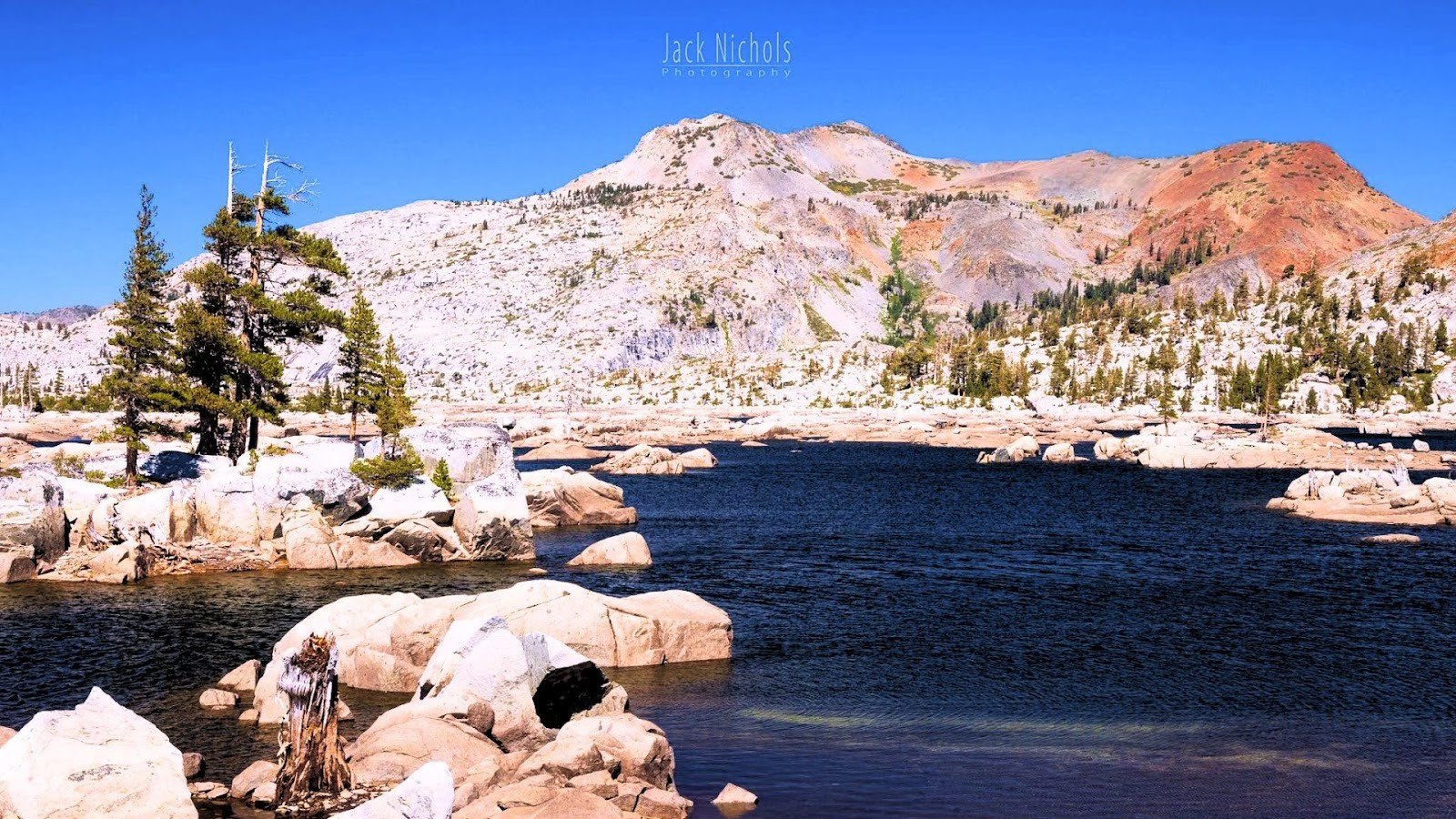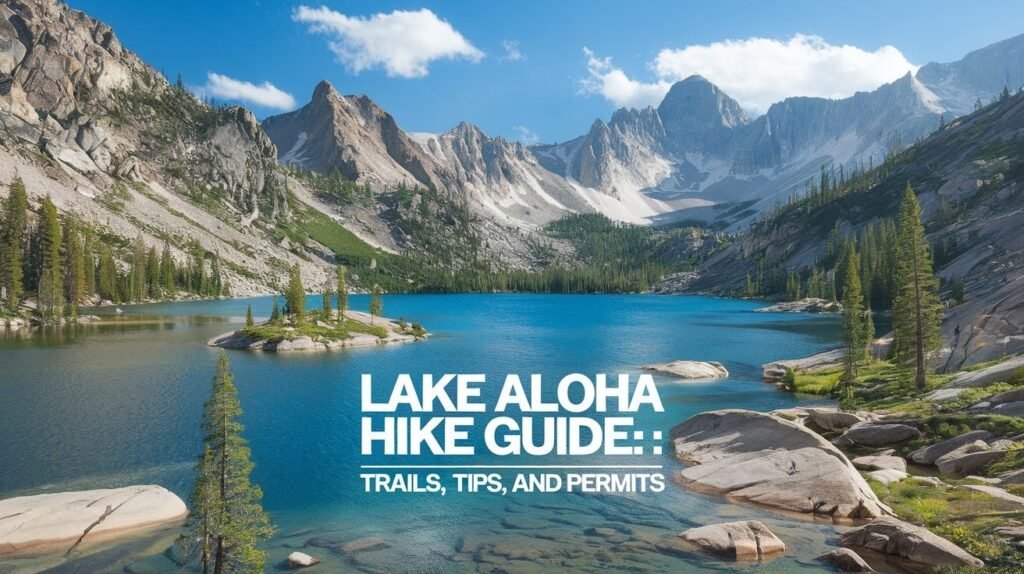As a certified wilderness guide with 8 years of experience leading backpacking trips in the Lake Tahoe region, I’ve hiked to Lake Aloha dozens of times. This alpine lake sits in a granite basin within Desolation Wilderness, about an hour south of Lake Tahoe. Crystal-clear water reflects towering peaks while dozens of small islands dot the lake’s surface.
The trail to Lake Aloha offers one of the most rewarding day hikes in the Sierra Nevada. You’ll walk past five different lakes, swim in mountain water, and see incredible mountain views. The 12.5-mile round trip challenges most hikers, but the payoff makes every step worth it. This guide shares tested advice from years of leading groups on this trail.
Trail Information
Here’s everything you need to know before hitting the trail to Lake Aloha.
Trail Basics

Lake Aloha attracts hikers from around the world for good reason. The trail offers a perfect mix of challenge and beauty that keeps people coming back.
This popular hiking destination requires some planning, but the effort pays off with incredible mountain scenery.
- 12.5-mile heavily trafficked loop trail near Echo Lake, California
- Difficulty rating: Difficult
- Trail features: Beautiful wildflowers, accessible year-round
- Dog policy: Dogs allowed but must be on leash
Trail Characteristics
The trail stays mostly flat for the majority of your hike. You’ll only face two sections with steep climbs that will get your heart pumping.
This makes Lake Aloha accessible to most hikers in decent physical condition. The variety of lakes along the way gives you plenty of rest stops and photo opportunities.
- Mostly flat terrain with only two sections of significant elevation gain
- Passes by 5 lakes in under 12 miles round trip
- Starting point: Echo Lakes Trailhead
- 3-mile hike along lower and upper echo lakes with granite cliffs
Route Description
Your hike begins at the well-marked Echo Lakes Trailhead. The path takes you through some of the most beautiful wilderness areas in California.
Each section of the trail offers something different, from granite cliffs to alpine meadows. The final approach to Lake Aloha reveals why this destination is so special.
- The trail begins at the Echo Lake area
- Passes through several small lakes
- Entry into Desolation Wilderness
- Final approach to Lake Aloha with surrounding peaks
Supporting Details & Expanded Information
Once you know the basic trail information, these details will help you plan a successful trip.
Permit Requirements & Planning
All hikers need permits to visit this protected wilderness area. The process is straightforward, but you should plan, especially for summer trips.
Getting your permits early ensures you won’t miss out on this incredible hiking experience. The small fees help maintain the trails and protect the wilderness.
- Wilderness permit needed for overnight trips
- Contact Placerville Ranger Station in Camino, CA
- Fees: $6 reservation fee plus $5/person for first night, $10 for additional nights
- Day hikes: Fill out the day permit at the Echo Lakes Trailhead
Trail Experience & What to Expect
The trail offers more than just hiking. You’ll find unique features like a phone booth in the wilderness and opportunities for water activities.
Swimming in Lake Aloha after a long hike feels amazing. The clear mountain water and island-hopping opportunities make this lake special among Sierra destinations.
- Water taxi option available to shave off 3 miles (great for day trips)
- Phone booth at the water taxi dock for calling the store
- Swimming opportunities at Lake Aloha
- Island-hopping swimming experiences
- Various camping spots are available
Lake Aloha Features

Lake Aloha isn’t your typical mountain lake. The complex shoreline creates countless coves and channels to examine during your visit.
This unique geography makes the lake perfect for water activities. You can spend hours swimming between islands or paddling around in an inflatable boat.
- Not one big open lake but a labyrinth of inlets, channels, granite peninsulas, and scattered islands
- Perfect for water activities like packrafting
- Multiple coves and shoreline spots to check out
- Opportunities to carry boats over rocks between water sections
Deeper Details for Trip Planning
These additional details will help you make the most of your Lake Aloha experience.
Alternative Route Options
Several route variations can change your Lake Aloha experience. The water taxi shortcut works great for day hikers with limited time. You can also create one-way trips with proper shuttle arrangements.
The connection to longer trail systems opens up multi-day possibilities. Consider extending your trip to see more of the Desolation Wilderness or connect to the famous Tahoe Rim Trail.
- Water taxi shortcut for easier/shorter trips
- Shuttle option: Echo Lake to Lake Aloha to Fallen Leaf Lake (same mileage, different scenery)
- Connection to Tahoe Rim Trail (200-mile trail going around Lake Tahoe)
- Options for multi-day extensions heading north or south
These connections make Lake Aloha a perfect starting point for longer wilderness experiences.
Practical Tips & Logistics
Smart planning makes the difference between a great hike and a difficult experience. Timing your visit right helps you avoid crowds and bad weather. Early season visits offer fewer people but possible snow, while summer brings perfect weather but busy trails.
Your gear choices matter more at high altitude. Pack layers for changing mountain weather, bring a reliable water filter, and plan for bear encounters with proper food storage.
- Best times to visit and seasonal considerations
- Parking at Echo Lakes Trailhead
- Gear recommendations for day hikes vs. overnight trips
- Water filtration needs
- Bear safety and food storage
Proper preparation lets you focus on enjoying the incredible mountain scenery.
Extended Trip Possibilities
Lake Aloha serves as a gateway to longer wilderness experiences. The area offers some of the best backpacking in California’s Sierra Nevada mountains. Multiple camping areas let you extend your stay and see more of this special place.
The connection to broader trail systems means you can create custom trips lasting several days. Many hikers use Lake Aloha as a base camp for day trips to other nearby lakes and peaks.
- Overnight backpacking options near Lake Aloha
- Multi-day wilderness experiences
- Connection to the broader Desolation Wilderness trail system
- Integration with other Lake Tahoe area activities
These extended options help you get the most from your time in this incredible mountain region.
Conclusion
After guiding hundreds of hikers to Lake Aloha over 8 years, I can confidently say this trail offers the perfect Sierra Nevada experience. The 12.5-mile round trip challenges you while rewarding you with crystal-clear alpine water and granite peak views that rank among California’s best.
Plan your visit with proper permits from the Placerville Ranger Station. Summer and fall provide ideal conditions, but start early to avoid afternoon storms. Follow Leave No Trace principles to protect this wilderness for future hikers.
Lake Aloha delivers everything serious hikers want: challenging terrain, incredible scenery, and pristine mountain water. Get your permits, pack your gear, and experience why this trail is considered the gem of Desolation Wilderness.
Frequently Asked Questions
How hard is the Lake Aloha hike?
The Lake Aloha trail is rated as difficult due to its 12.5-mile distance and high altitude. However, most of the trail stays relatively flat with only two steep sections. Hikers in decent physical condition can complete it in 6-8 hours.
Do I need permits for Lake Aloha?
Yes. Day hikers fill out a free permit at the Echo Lakes Trailhead. Overnight trips require advance wilderness permits from Placerville Ranger Station ($6 reservation fee plus $5 per person for the first night).
Can I bring my dog to Lake Aloha?
Dogs are allowed on the Lake Aloha trail but must stay on leash at all times. Make sure your dog is in good hiking condition since the trail is long and challenging.
Is the water taxi worth it?
The water taxi across Echo Lake saves 3 miles of hiking, making it great for day trips or hikers with limited time. It costs extra but can be worthwhile if you want to spend more time at Lake Aloha itself.
When is the best time to hike to Lake Aloha?
Late spring through fall offers the best conditions. Summer provides warm weather and clear trails but brings crowds. Early fall offers fewer people with still-pleasant weather. Winter access is possible but requires snow gear and experience.

